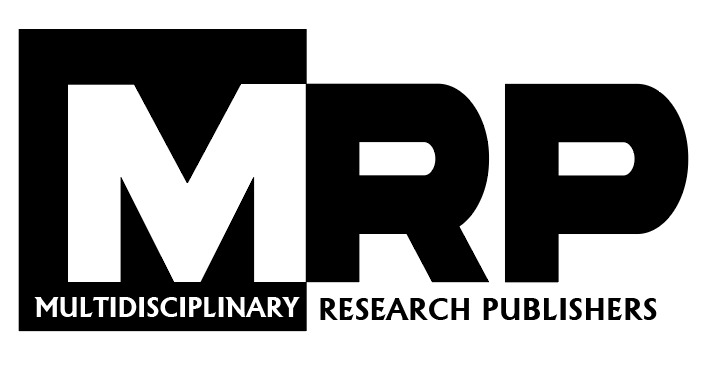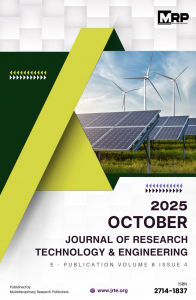Downloads
Latest
- Implementing BIM for Economic Sustainability – Addressing Adoption Challenges in Sri Lankas Residential Construction SectorThis paper examines the potential of Building Information Modeling (BIM) to enhance economic sustainability in Sri Lanka’s residential construction sector by building upon an existing dissertation and relevant literature. A mixed-methods approach comprising a structured questionnaire administered to 25 industry professionals and in-depth interviews with three experts (a civil engineer, a structural design engineer, and …
- Next-Generation Computing Frameworks – Harnessing Quantum-Inspired Algorithms for Scalable and Resilient SystemsThe growing demand for computational power has surpassed the capacity of traditional systems, creating an urgent need for innovative approaches. This study introduces a next-generation computing framework that integrates quantum-inspired algorithms, adaptive machine learning, and distributed architectures to achieve scalability, fault tolerance, and energy efficiency. The proposed framework reduced computation time by 40% (from 1050 …
- Spatial Analysis of Soil Erosion in the Badrah Watershed Using the RUSLE Model and GIS Considering Rainfall IntensitySoil erosion is a major environmental issue affecting land productivity, water quality, and ecosystem stability, particularly in semi-arid regions. This study employs the Revised Universal Soil Loss Equation (RUSLE) model integrated with Geographic Information Systems (GIS) and remote sensing techniques to assess the spatial patterns of soil erosion within the Badrah watershed, Iraq, considering rainfall …
- Feasibility Study and Assessment of Installed Biogas Plant – Case Study of Dang Ghorahi NepalBiogas, produced through the anaerobic digestion of organic matter, is an environmentally friendly energy source that contributes to climate change mitigation and poverty reduction. This study evaluates the technical and operational feasibility of a domestic biogas system installed in Ghorahi-16, Dang, Nepal. The plant primarily utilizes cow and buffalo manure, kitchen waste, and black water …
- Investigating the Influence of Diverse Sri Lankan Sands on Concrete Properties for Sustainable ConstructionRiver sand mining in Sri Lanka has caused severe environmental degradation, necessitating sustainable alternatives for concrete production. This study evaluated four sand types—river, sea, dune, and estuary sands—through standardized testing of physical properties, chemical composition, and concrete performance. Representative samples underwent sieve analysis, chloride content determination via Volhard’s method, and mechanical testing for compressive and …
- The Impact of Technological Advancements on Environmental Pollution in Sri LankaEnvironmental pollution in Sri Lanka has intensified due to rapid urbanization and industrial growth, significantly impacting the nation’s biodiversity and ecosystem health. While technological advancements can contribute to environmental degradation, they also offer promising solutions for environmental protection. This review examines the dual role of technology in Sri Lanka’s environmental context, analyzing both its adverse …
The Impact of Technological Advancements on Environmental Pollution in Sri LankaRead More
- Nutritional Functional and Sensory Evaluation of Pizza Base Incorporated with Palmyrah Tuber FlourAs an underutilized resource, Palmyrah tuber flour (PTF) shows potential to serve as a substitute for wheat flour (WF) in multiple food applications. This study investigated the effect of incorporating PTF into pizza base (PB) on its nutritional, functional, and sensory attributes. PB formulations were prepared with varying levels of PTF substituting WF, and the …
- Recent Progress in Using Nanotechnology to Improve Metal-Based DrugsMetallodrugs, which contain metal ions as active components, exhibit promising therapeutic effects compared to conventional organic drugs. This review explores various classes of metallodrugs, including platinum-, gold-, and ruthenium-based compounds, and their biomedical applications in treating cancer, bacterial, and inflammatory diseases. Despite their advantages, metallodrugs face challenges such as toxicity, selectivity, cost, and stability issues. …
Recent Progress in Using Nanotechnology to Improve Metal-Based DrugsRead More
- Energy Transition and Sustainability Challenges in Sri Lanka – A Policy PerspectiveSri Lanka’s energy sector is undergoing a critical transformation as the nation aims to achieve carbon neutrality and enhance energy security amid growing demand and resource constraints. This paper explores the country’s energy transition from conventional fossil-based systems toward renewable and sustainable alternatives. It assesses the current energy mix, government policies, and strategic frameworks such …
Energy Transition and Sustainability Challenges in Sri Lanka – A Policy PerspectiveRead More
- The Factors Affecting Female Labor Force Participation – Case Study of Sri LankaFemale labor force participation (FLFP) is a key indicator of gender equality and economic development. Sri Lanka has made significant progress in gender equality, with high female literacy rates and educational attainment levels. However, FLFP in Sri Lanka remains low, at around 30–35% for the past two decades—well below the global average of 49.6%. The …
The Factors Affecting Female Labor Force Participation – Case Study of Sri LankaRead More
- Advances in Nanomaterials – Self Cleaning and Antibacterial ApplicationsNanomaterials have gained growing importance in modern science and technology due to their exceptional self-cleaning and antibacterial properties. This review explores recent advancements in nanotechnology, emphasizing the mechanisms behind these functionalities and their wide-ranging applications in medicine, construction, textiles, and environmental protection. Self-cleaning properties are mainly achieved through superhydrophobicity and photocatalysis, while antibacterial effects arise …
Advances in Nanomaterials – Self Cleaning and Antibacterial ApplicationsRead More
- A Conceptual Framework for Nanotechnology-Driven Smart Textiles in Wearable Applications and Environmental MonitoringSmart textiles based on nano-enhanced materials are emerging as key innovations in the technological revolution, merging nanomaterials with traditional fabrics to create multifunctional materials for wearable health monitoring, adaptive clothing, and environmental sensing. Despite rapid advancements, the field lacks a systematic and unified approach to guide the development of these advanced materials. This paper introduces …
- Machine Learning-Driven Predictive Maintenance – Identifying Critical Component Failures in Tyre Manufacturing MachineryUnexpected equipment breakdowns continue to cause major disruptions and financial losses across manufacturing industries. In tyre production facilities, unplanned failures of critical machinery components lead to significant downtime and reduced productivity. Traditional maintenance approaches—reactive, preventive, or condition-based—often fail to balance reliability and cost efficiency. Predictive maintenance (PdM), enhanced by machine learning (ML), provides a robust …
- Nanostructured Materials – Innovations, Challenges, and Future Prospects in EngineeringNanostructured materials, with structural dimensions of 1–100 nm, exhibit extraordinary properties arising from quantum confinement and high surface-to-volume ratios. This review surveys their fundamental principles, fabrication routes (top-down and bottom-up), property enhancements, cross-disciplinary applications, and prevailing challenges across engineering domains. Metallic nanoparticles, carbon-based nanomaterials, and inorganic/semiconductor nanoparticles are classified by composition and dimensionality, highlighting distinctive …
Nanostructured Materials – Innovations, Challenges, and Future Prospects in EngineeringRead More
- Comprehensive Insights into Nanomaterials – Synthesis, Applications, and Regulatory AspectsA significant amount of research on nanomaterials has been conducted in the field of engineering over recent years. Owing to rapid advancements in industries such as electronics, energy, medicine, food, and agriculture, nanotechnology is emerging as a transformative field. This paper reviews disruptive innovations in nanomaterials, including fabrication techniques such as Atomic Layer Deposition (ALD) …
Comprehensive Insights into Nanomaterials – Synthesis, Applications, and Regulatory AspectsRead More
- Renewable Energy Storage: Material Innovations in Batteries and SupercapacitorsThis research paper discusses the fundamental importance of energy storage technologies in mitigating the intermittency and variability of renewable energy sources such as solar, wind, hydropower, tidal and wave energy, geothermal energy, and biomass. Energy storage enables reliable grid integration, reduces dependence on fossil fuels, and supports global decarbonization efforts. The review explores mechanical storage …
Renewable Energy Storage: Material Innovations in Batteries and SupercapacitorsRead More
- Life Cycle Assessment (LCA) of Bio-Based Polymers vs. Conventional Plastics in Automotive EngineeringIn this study, Life Cycle Assessment (LCA) was employed to compare the environmental impacts of bio-based polymers with those of conventional plastics in the automotive sector. Energy consumption, greenhouse gas emissions, land use, water consumption, and end-of-life treatment were analyzed throughout the material life cycle. Findings indicate that traditional plastics, while cost-effective and durable, contribute …
- Recent Advances and Challenges of Encapsulation in Dairy Systems – A ReviewThe incorporation of bioactive compounds into dairy products has gained increasing attention due to their potential health benefits, including antioxidant, anti-inflammatory, and disease-preventive properties. However, many of these compounds, such as probiotics, vitamins, minerals, enzymes, and omega-3 fatty acids, are highly unstable under adverse processing and storage conditions. Encapsulation has emerged as a promising technology …
Recent Advances and Challenges of Encapsulation in Dairy Systems – A ReviewRead More
- Reducing Environmental Impact Through Sustainable Engineering MaterialsA transition towards sustainable engineering materials is vital in reducing the environmental footprint of contemporary infrastructure and manufacturing activities. The present research delves into sustainable material usage, examining key parameters such as cost-effectiveness, availability, durability, recyclability, and environmental footprint. Alternatives such as recycled metals, bamboo, natural fibre composites, and bioplastics are promising alternatives to traditional …
Reducing Environmental Impact Through Sustainable Engineering MaterialsRead More
- Minimizing Ecological Footprint with Eco-Friendly Engineering MaterialsUsing sustainable materials in engineering can decrease the impacts caused by climate change, pollution, and resource depletion. The study highlights how innovations such as bamboo, hempcrete, and bioplastics offer environmentally responsible alternatives to conventional materials by examining renewable, recycled, and biodegradable materials. The article is entirely based on secondary sources, including journals, articles, academic books, …
Minimizing Ecological Footprint with Eco-Friendly Engineering MaterialsRead More
ISSN
2714-1837
| M | T | W | T | F | S | S |
|---|---|---|---|---|---|---|
| 1 | 2 | 3 | 4 | 5 | 6 | 7 |
| 8 | 9 | 10 | 11 | 12 | 13 | 14 |
| 15 | 16 | 17 | 18 | 19 | 20 | 21 |
| 22 | 23 | 24 | 25 | 26 | 27 | 28 |
| 29 | 30 | 31 | ||||
Our Visitors






 Users Today : 74
Users Today : 74 Total Users : 42393
Total Users : 42393 Views Today : 100
Views Today : 100 Total views : 104763
Total views : 104763 Who's Online : 0
Who's Online : 0 Your IP Address : 216.73.216.134
Your IP Address : 216.73.216.134

